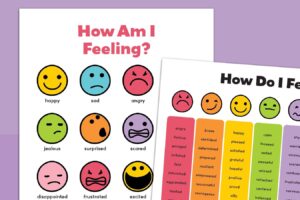
International Student Demand Remains High for Now
Despite federal attitudes and policies toward international students, demand to study in the U.S. remains high.
Photo illustration by Justin Morrison/Inside Higher Ed | Getty Images
Advocates for international students are raising alarms that federal actions are limiting foreign-born learners’ ability to study in the U.S. But researchers say the trend isn’t an indication of international student interest or demand to study in the U.S.
A late July survey of 300 foreign-born students found 91 percent plan to study in the U.S., despite funding cuts and internal instability in the U.S. The reputation of U.S. institutions also has yet to take a hit, with 99 percent of respondents indicating they still trust the academic quality of U.S. institutions.
That’s not to say students are unaware of or undeterred by changes at the federal level. Fifty-five percent of survey respondents indicated some level of concern about pursuing their degree in the U.S., and 50 percent said they’re less excited about the opportunity now than they were previously. The top reason their sentiment has changed is international tensions or politics (54 percent), followed by worries about political instability in the U.S. (45 percent).
Brian Meagher, vice president at Shorelight, a higher education consulting group focused on international students, said at an Aug. 12 media roundtable that even students caught in the visa backlog haven’t shifted their gaze to other countries yet. Instead, they are deferring to the spring semester. May data from the U.S. Department of State shows 19,000 fewer students received a F-1 or J-1 visa that month compared to May 2024, which experts say is the first sign that a fraction of expected students will be coming to campus this fall.
“Most of them want [to study in] the U.S.—they’re not changing their minds to the U.K. or Canada or Australia,” Meagher said. “We do think there will be a longer-term impact on switching to other country destinations as a result of this.”
Others are taking classes online at their host institution or enrolling in a satellite campus elsewhere in the world for their first term, but those are less popular options, Meagher said.
“In talking with prospective students, I’d say the belief is that this is a temporary changeover at an unfortunate time that may result in missing a fall semester,” Shorelight CEO Tom Dretler said during the roundtable.
Long-Term Challenges Expected
While international students see the changes as a short-term setback, some market predictions forecast significant changes to U.S. higher education enrollment and revenue. At least the lack of visas could impact future applications to U.S. colleges, Dretler said.
Research by Holon IQ, a global intelligence agency, points to the U.S. as a top destination country for international students for decades, but since 2016—roughly the start of the first Trump administration—the country lost 10 percentage points of its share of international students.
Starting in 2016, “the U.S. became perceived by some as less welcoming or safe, did not recruit international students as energetically, and denied a substantial fraction of student visa applications, while governments and university sectors in the other countries acted in concert to grow international student numbers,” according to an August report from Holon IQ.
Modeling by Holon IQ finds that a variety of actions by the federal government, including visa policy changes, a crackdown on universities and new tariffs could create barriers to students in the U.S. as well as a climate of uncertainty for prospective students.
The agency predicts the most likely trajectory is there will be a short-term decline in U.S. international enrollment, with 1.12 million students in 2030, unchanged from 2023 levels. But possible scenarios range from an increase in students of 8.3 percent to a drop of 7.9 percent by 2030.
“I think what’s happening in the U.S. is a point in time as to whether the U.S. will continue to lead and for how long it will continue to remain the global leader for international student mobility and a desired study destination,” said Patrick Brothers, co-CEO of Holon IQ Global Impact Intelligence, during the media roundtable.
Paying the Price
Experts warn that a lack of students on campus could mean billions in lost tuition revenue for years to come.
NAFSA, the association of international educators, reported if the number of new international student enrollment declined between 30 and 40 percent, it would result in a 15 percent drop in overall international enrollment and result in a loss of $7 billion in revenue.
June data from Shorelight found even a 20 percent decline would result in a $1.7 billion annual loss in tuition revenue, or $5 billion over four years.
“We think it’s going to be something that is negative for the U.S. economy, negative from a jobs perspective and also very hurtful to colleges and universities, but not always the one that people think,” Dretler said. Top universities will be able to weather the financial hit, pulling students off their waiting lists, but regional and community colleges will experience greater losses, which could increase tuition rates for middle-class families.
States with high international student enrollment would be hit hardest by the changes. Among the top states for international students—California, New York and Texas—Shorelight anticipates a total loss of $566.6 million and NAFSA projects a loss of $2.39 billion, based on their respective data models.
Source link



